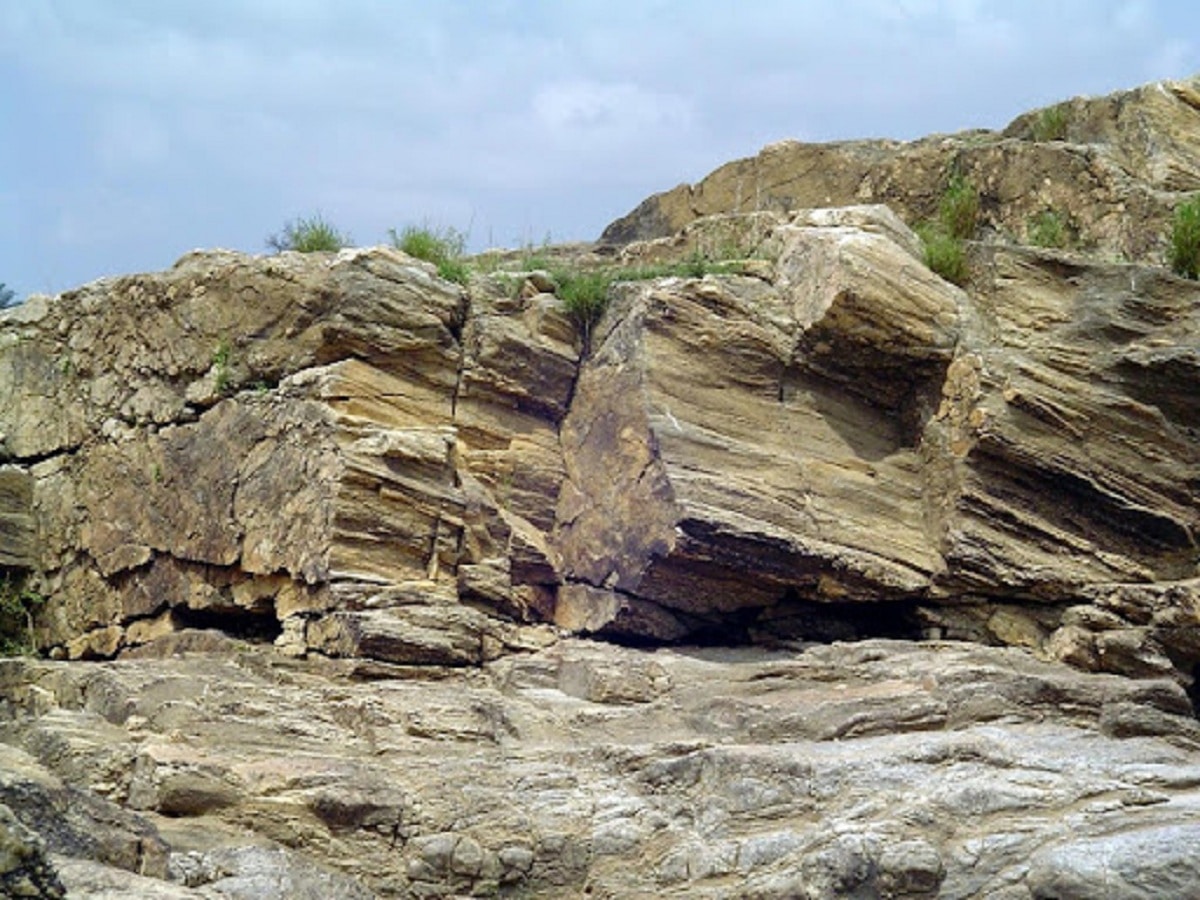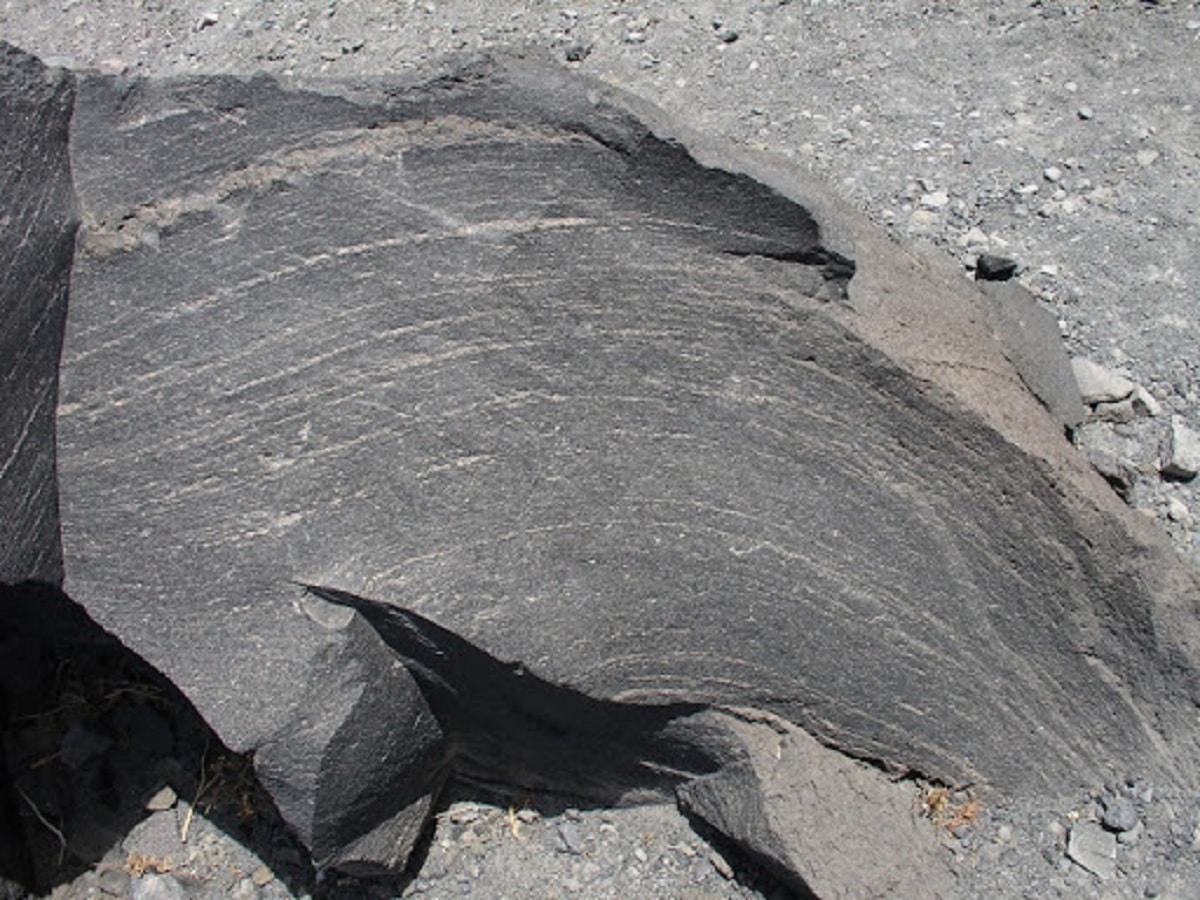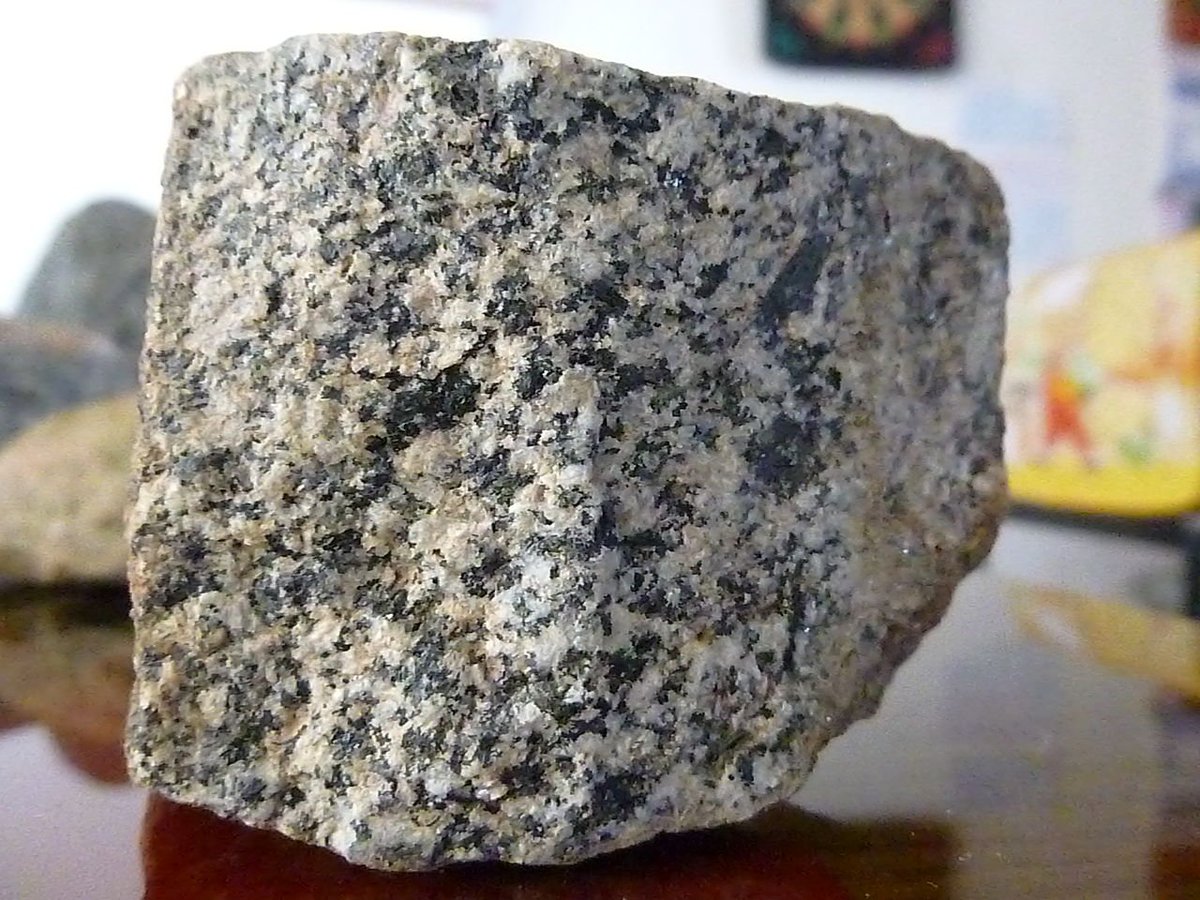
On our planet there are rocks of various types. Since our planet was formed, millions have been formed over the years and depending on the characteristics, origin and origin there are different types. Let's define what is a rock from the geological point of view in order to better understand what our planet is made of.
In this article we are going to tell you what a rock is, what its characteristics are and what are the different types that exist.
What is a rock

Rocks are made up of minerals or aggregates of individual minerals. In the first type, we have granite, and in minerals, we have rock salt as an example. Rock formation is a very slow process and follows a different process. According to the genesis of the rocks, they can be divided into three types: igneous rocks, sedimentary rocks, and metamorphic rocks. These rocks are not permanent, but are constantly evolving and changing. Of course, they are changes in geologic time. In other words, on a human scale, we won't see the formation and destruction of a complete rock, but they have what is called a rock cycle.
Rock types

Sedimentary rocks
Those rocks that are formed by the accumulation of different particles of different sizes, which come from other particles that have rock formations, are thus called. All the particles that make up the rock are called sediments. This is the origin of its name. These sediments are transported by external geological factors such as water, ice and wind. The sediments that form sedimentary rocks are transported by various geological factors and deposited in the so-called sedimentary basins.
In the process of sediment transport, the stone particles will undergo various physical and chemical processes called diagenesis. By this name, we refer to the process of rock formation. The most normal situation is the formation of sedimentary rocks on the banks of rivers, sea beds, lakes, estuaries, streams or ravines. The formation of sedimentary rocks takes place over billions of years. Therefore, in order to analyze the origin and formation of sedimentary rocks, the geological time scale must be taken into account.
Plutonic rocks
Next we will describe the main characteristics of this type of rock formed in the aforementioned sediments. They are usually dense and do not have holes. Its texture is very rough and is made up of several elements. They are very diverse because we can find a variety of chemical compositions depending on the type of magma from which they come.
These rocks are very abundant on the earth's surface and are considered native rocks. This is because these rocks favor the formation of other rocks. These types of rocks are also found in the cores of terrestrial planets, such as Mercury, Venus, and Mars, and other gas giant planets, such as Saturn, Jupiter, Uranus and Neptune.
Igneous rocks
Igneous rocks are rocks formed by the cooling of magma inside the earth. It has a fluid part of the mantle called the asthenosphere. Magma can be cooled within the earth's crust and by forces from the earth's crust. Depending on where the magma is cooled, the crystals will form at different speeds in one way or another, resulting in various textures, such as:
- Granulated: When magma slowly cools and minerals crystallize, visible particles of very similar size will appear.
- Porphyry: magma is produced when it cools at different times. At first it started to cool slowly, but then it got faster and faster.
- Vitreous. It is also called porous texture. It occurs when magma cools rapidly. In this way, the crystal is not formed, but it looks like glass.
Metamorphic rocks
They are rocks formed from other rocks. They are usually made up of sedimentary rocks that have undergone physical and chemical transformation processes. It is geological factors such as pressure and temperature that change the rock. Therefore, the type of rock depends on the minerals it contains and its degree of transformation due to geological factors.
Minerals

We cannot finish defining what a rock is without talking about minerals. Minerals are made up of solid, natural, and inorganic materials that originate from magma. They can also be formed by changes in other existing and formed minerals. Each mineral has a clear chemical structure, which is completely dependent on its composition. Its formation process also has unique physical characteristics.
Minerals have ordered atoms. These atoms are known to form a cell that repeats itself throughout the internal structure. These structures produce certain geometric shapes that, although not always visible to the naked eye, do exist.
The unit cell forms crystals that clump together and form a lattice or lattice structure. These mineral-forming crystals proceed very slowly. The slower the crystal formation, the more ordered are all the particles and, therefore, the better the crystallization process.
Mineral crystals are not isolated, but form aggregates. If two or more crystals grow in the same plane or axis of symmetry, a mineral structure called twin crystals is considered. An example of twins is crystalline rock quartz. If the minerals cover the surface of the rock, they will form clumps or dendrites. For example, pyrolusite.
On the contrary, if the minerals crystallize in the rock cavity, a structure called geodesic is formed. These geodesics are sold all over the world for their beauty and decoration. Olivine is a clear example of a geode. There are also some large geodesics, such as the Pulpi mine in Almería.
There are different standards for classifying minerals. Let's start with the first one. According to the composition of the minerals, it can be classified in a simpler way. They are divided into:
- Metal: Metallic mineral formed by magma. The most famous are copper and silver, limonite, magnetite, pyrite, malachite, azurite or cinnabar.
- Non-metallic. Among the non-metals, we have the silicates, whose main component is silicon dioxide. They are made up of magma asthenosphere. They are minerals like olivine, ecology, talc, muscovite, quartz, raw sugar and clay. We also have mineral salts, which are formed from the salt that precipitates when ocean water evaporates. They can also be formed by recrystallization of other minerals. They are minerals formed by precipitation. For example, we have calcite, gypsum, magnesite, anhydrite, etc.
I hope that with this information you can learn more about what a rock is and its characteristics.